The Cooper River cuts through the South Carolina low country which has been subjected to the countless cycles of marine intrusion and recession. The fossils erode
out of the layers in the banks and accumulate on the bottom of the river. Most people come here in search of the elusive Megalodon. The only legal way to recover the
fossils is to SCUBA dive in the tannin stained dark waters which are heavily influenced by the twice daily tides. A "Hobby License" from the state is required and
only surface collecting is permitted. Unless you are a local with a suitable boat, it is necessary to work with one of the several charter captains who serve the trade.
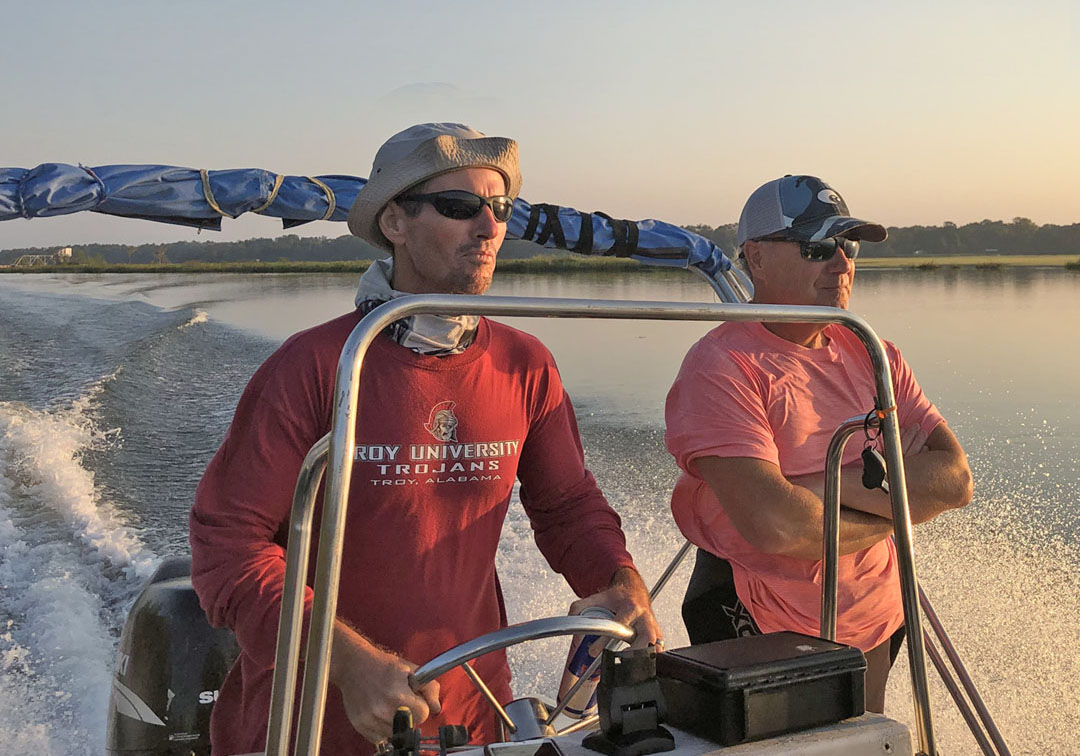
 |
 |
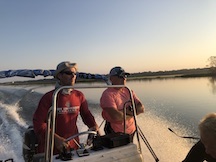 |
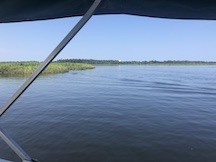 |
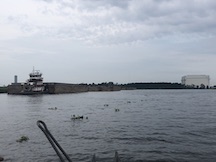 |
Cooper River Scenes
The Cooper River drains the coastal cypress swamps so the water is heavily infused with tannins. The tannins darken the water which is known as "black water". The
tidal influence is substantial. When the typical 3 to 5 foot tide is not at a high or low ebb, then the current will be so strong as to make it impossible to control
your position in order to see fossils on the bottom. There is also a significant danger of being swept away from the dive boat and out to sea. Proper planning of the
dive schedule is imperative and a very good reason to select a competent charter captain.
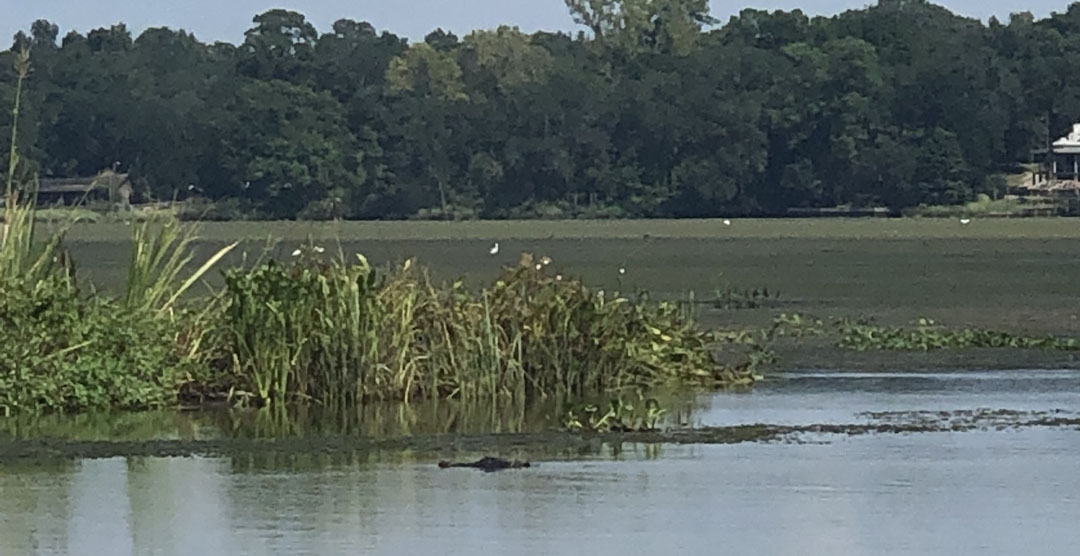
Wild Life
The river is home to an abundance of wild life. It is common to see porpoises, fishing eagles, jumping fish and a few alligators... While diving, you can
expect to encounter catfish, crabs flounders and shrimp. Although the alligators are around, there is no historical accounts of them attacking divers.
Click on the alligator's nose to see a short video!
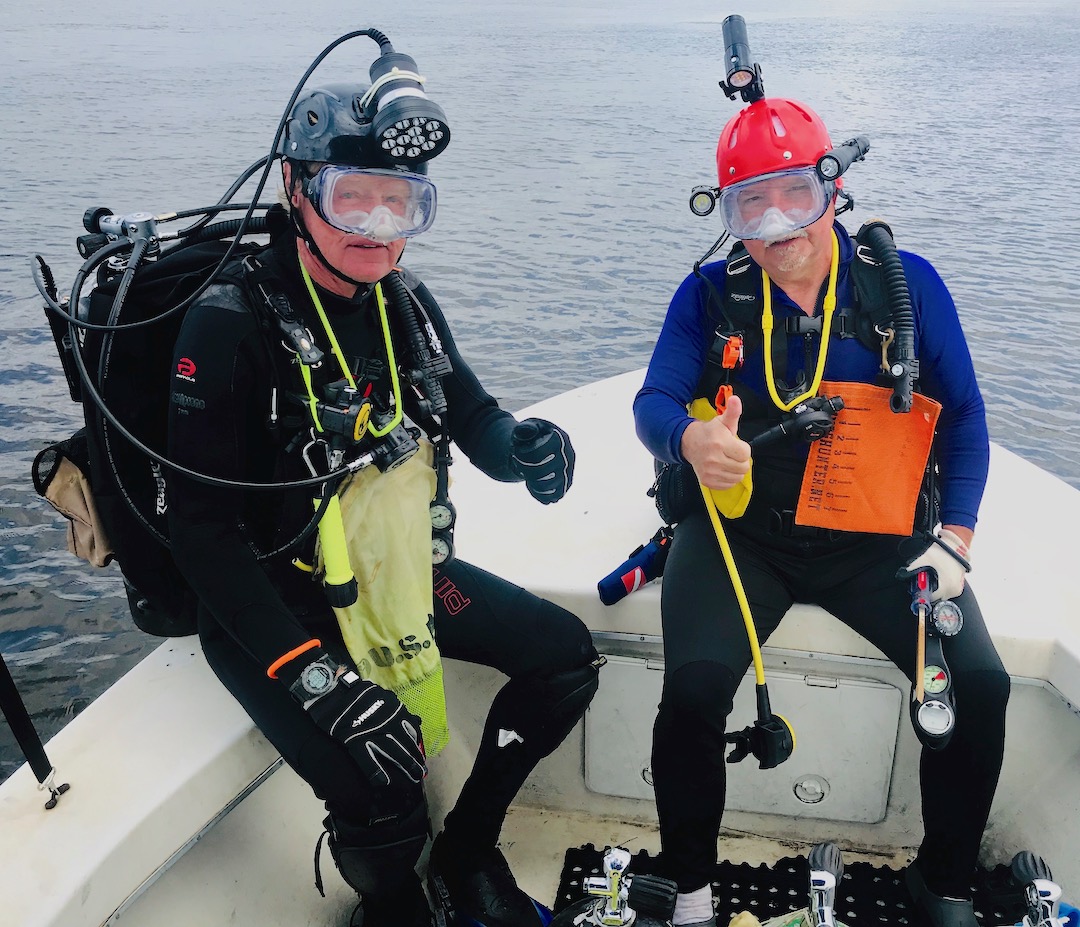
SCUBA Set Up
The river bottom has widely varying topography, including lots of sand dunes, sunken trees, bare hard pan, mud balls and gravel beds. The fossils erode out of the banks
and mostly collect in the gravel beds. The dive captain knows generally where the gravel beds are located so if you can drop into a gravel bed, you are likely to find
some fossils. There are lots of bone fragments, teeth and other marine and terrestrial animal remains. However, 90% of the sharks teeth are worn and broken so a good
condition shark tooth is not easy to find. Bone fragments are common but are also usually river worn by the movement associated with the cyclical tidal currents.
The river also carries a high level of sediment so the visibility for SCUBA diving is usually limited to less than 12" at the bottom of the river. This means
that in addition to full SCUBA gear, one must have a very bright light source in order to see and recover the fossils. A collecting bag is also a requirement.
Since you will also be battling the tidal current, a large screwdriver is used to help maintain your position on the bottom, giving you the opportunity to hunt.
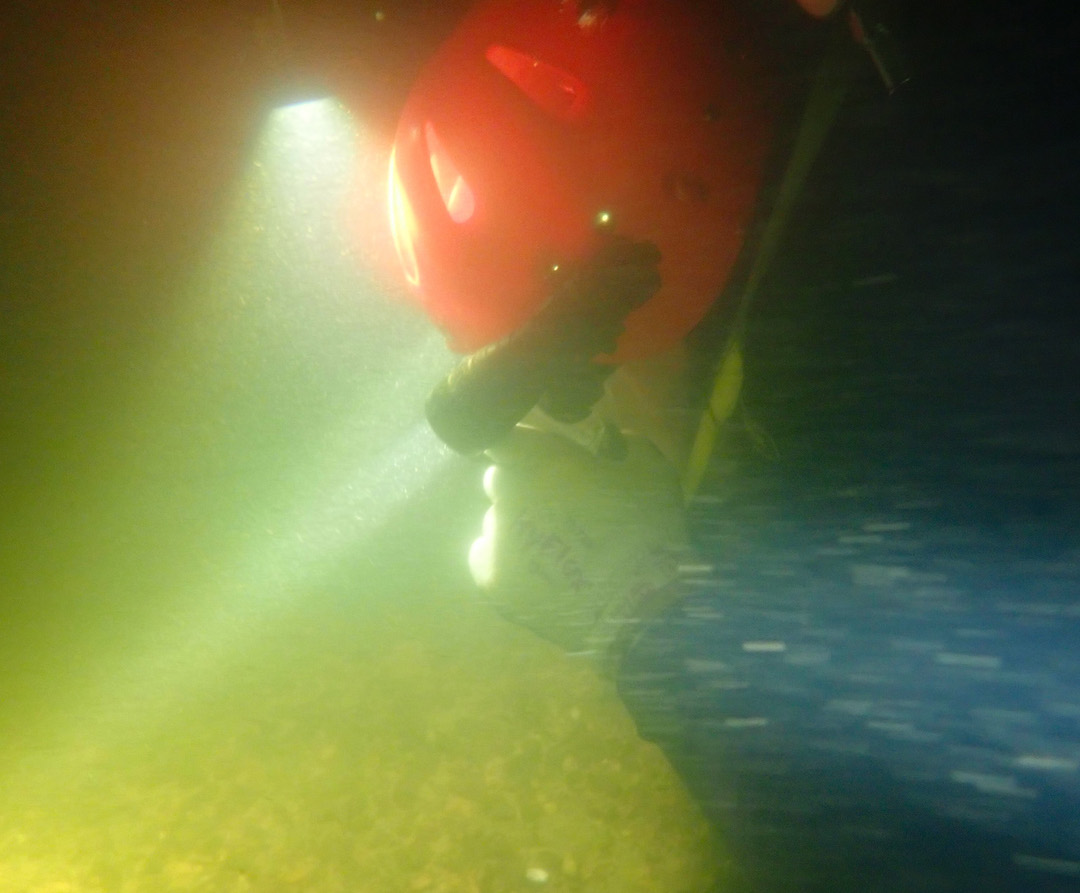
Black Water Visibility
The visibility at the bottom is typically about 12 inches. On an outgoing tide, it might get to 18 to 24 inches. Under slack tides with lots of sediment it
can be nearly impossible to see at all. The dive operator should be knowledgable about the visibility and tide conditions to optimize the diving conditions.
The rubber necklace for the regulator mouthpiece is essential due to the number of trees you will encounter. Diving the Cooper is not for the faint of heart.
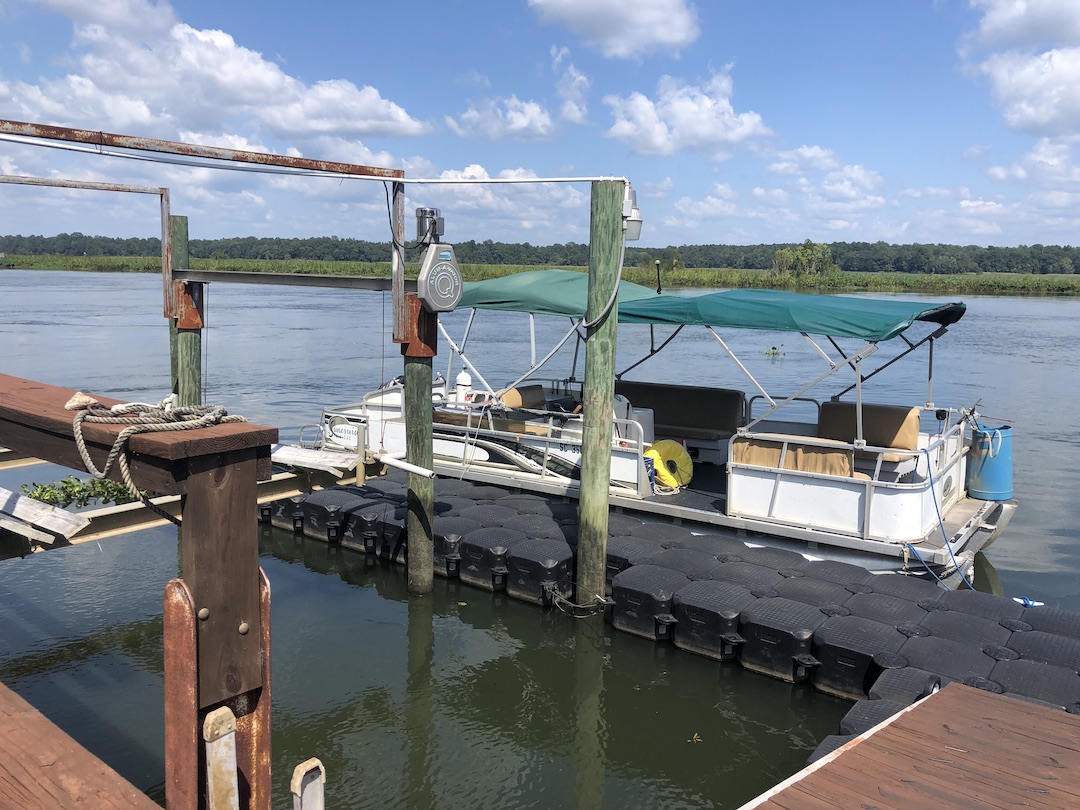
Typical Pontoon Style Dive Boat
Many operators use pontoon boats to accommodate four or five divers. Keep in mind, that the more divers in your group, then the gravel beds can get crowded.
Excursions can be two or three dives a day. Bottom time ranges from 50 to 90 minutes depending on the tank size and the level of effort to battle the current!
I typically dive with Mark Johnson of DivetheCooper.Com
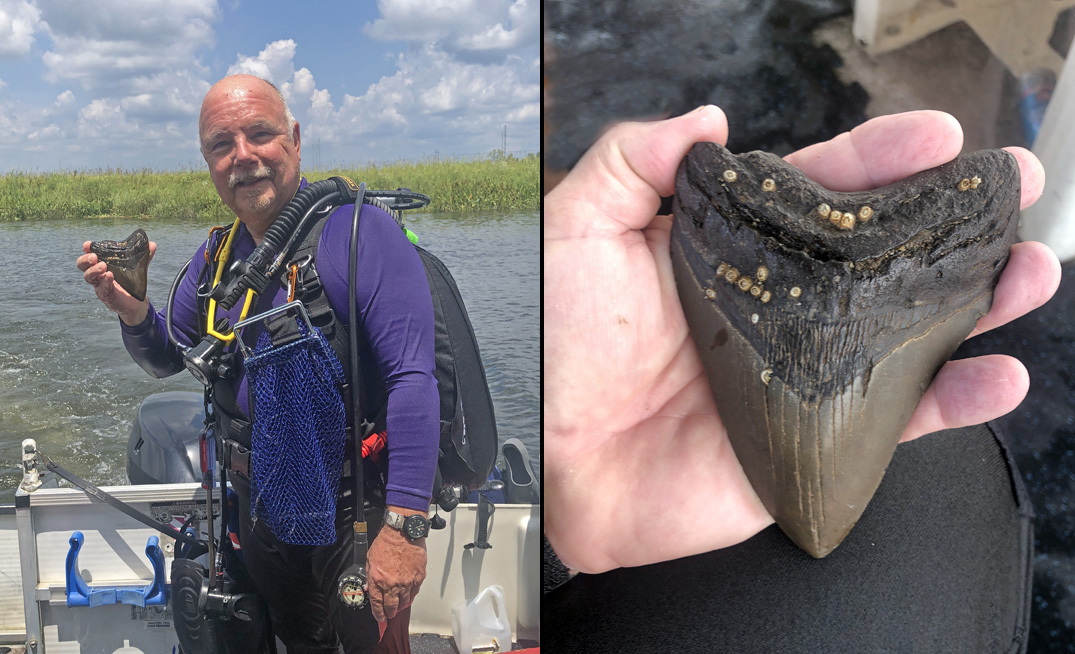
Megalodon
The goal for most people who come here is to go home with a nice big C. megalodon tooth. It took me three trips and 8 days of diving to finally find a nice big one.
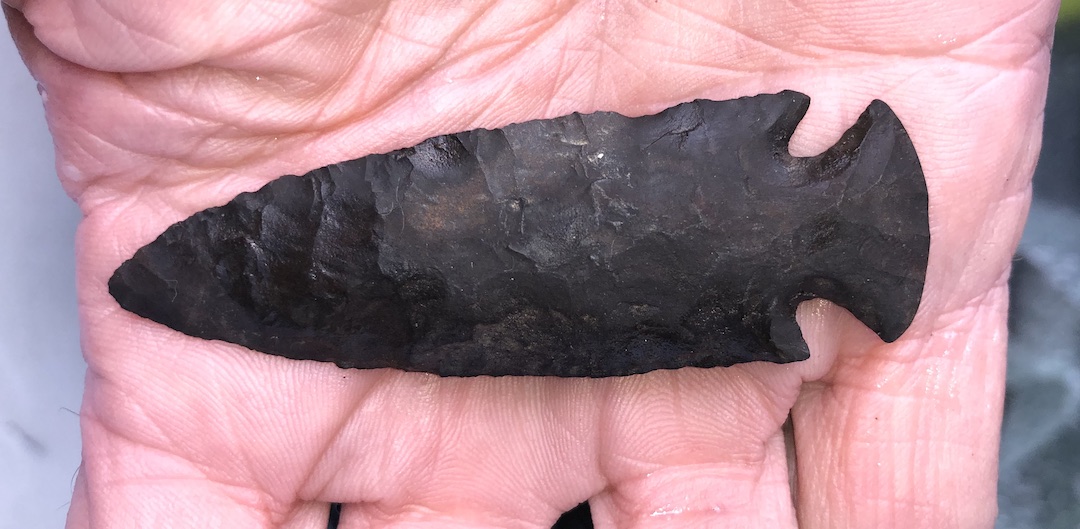
Spear Point, Bolen Style - Approximately 9000 Years Old
The low country has been inhabited for over 10,000 years. Artifacts span the range from 9,000 year old spear points to Bubba's beer can from last weekend.
Arrow heads are regularly found on the river bottom. As with the fossils, the river is not always kind to the points but on occasion, a nice one can be found.
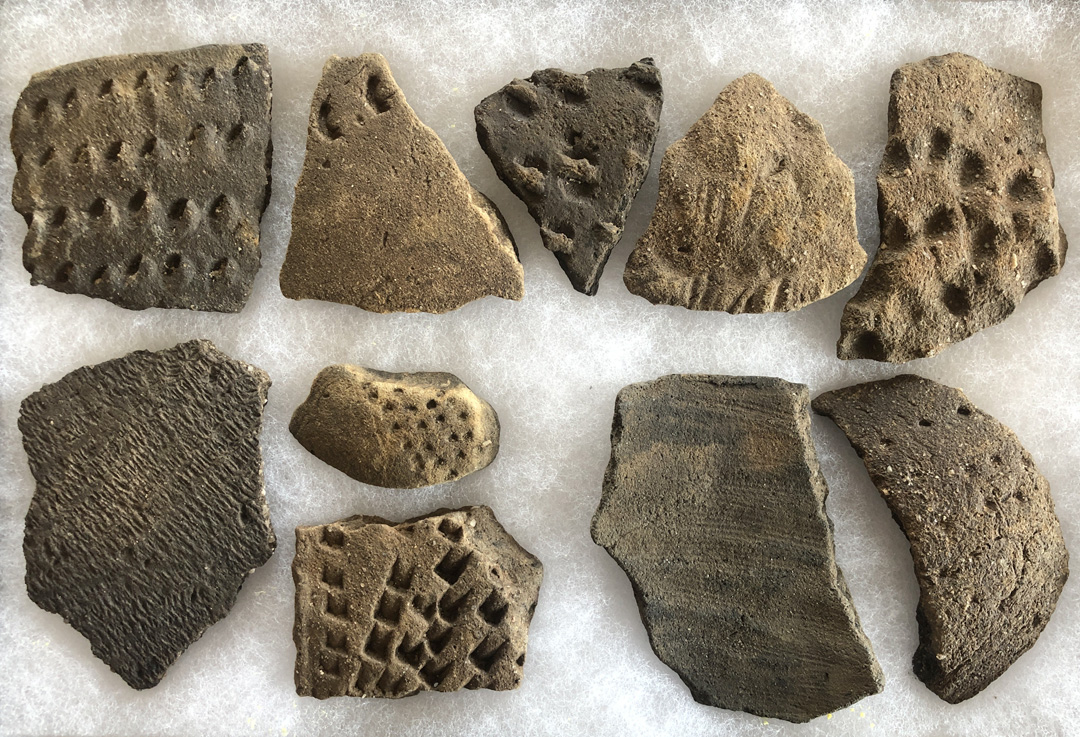
Pre-Columbian Native American Earthenware "Punctated" Pottery Sherds
Pottery sherds are common in some areas of the river. They range from earthenware dated at over 5,000 years old to glazed dinner ware from the colonial period.
The decorations impressed into the surface are called "punctations". The designs appear to identify with tribes and time period.These punctated sherds are over 2000 years old.
This link is a resource for identifying any pottery you find : -->South Carolina Pottery
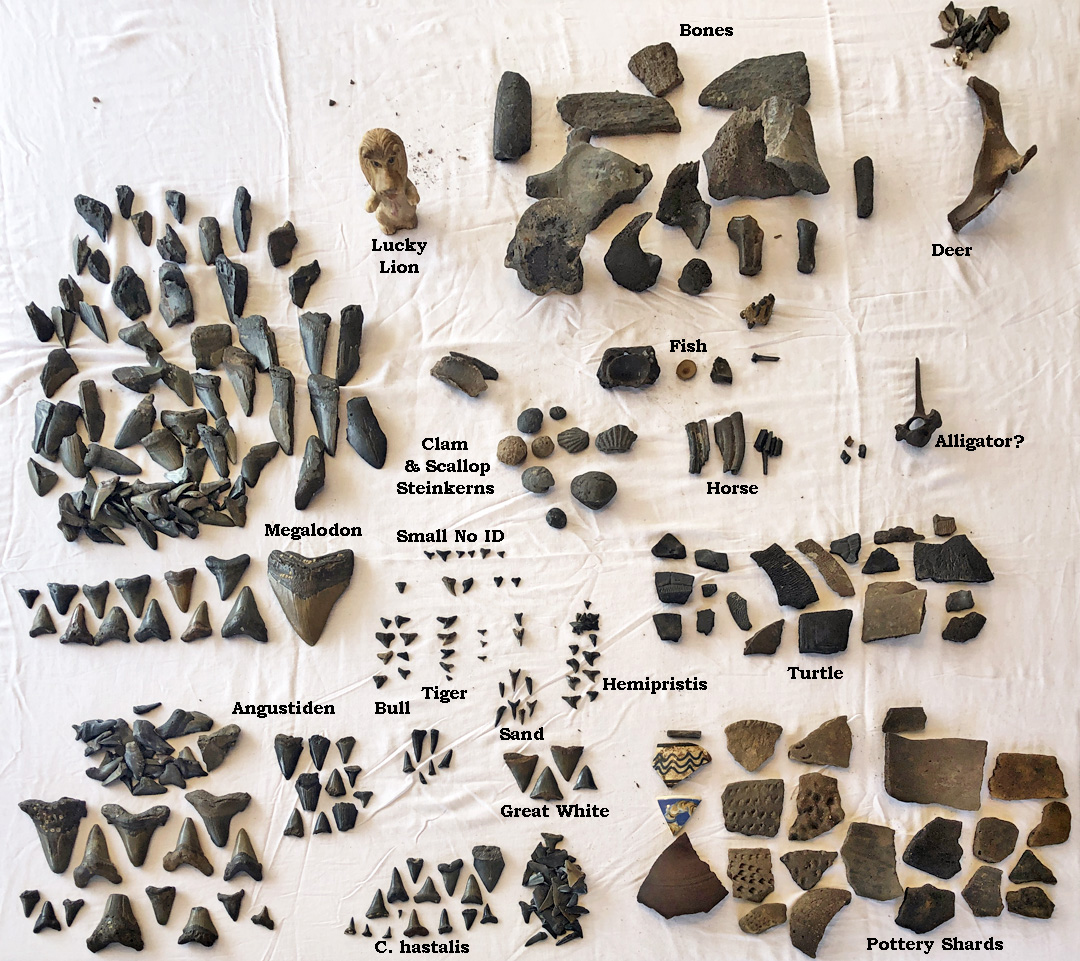
Results of 5 Days of Diving
Once you get the hang of it, you will find fossils. This is my haul from a recent 5 day trip, three dives per day.
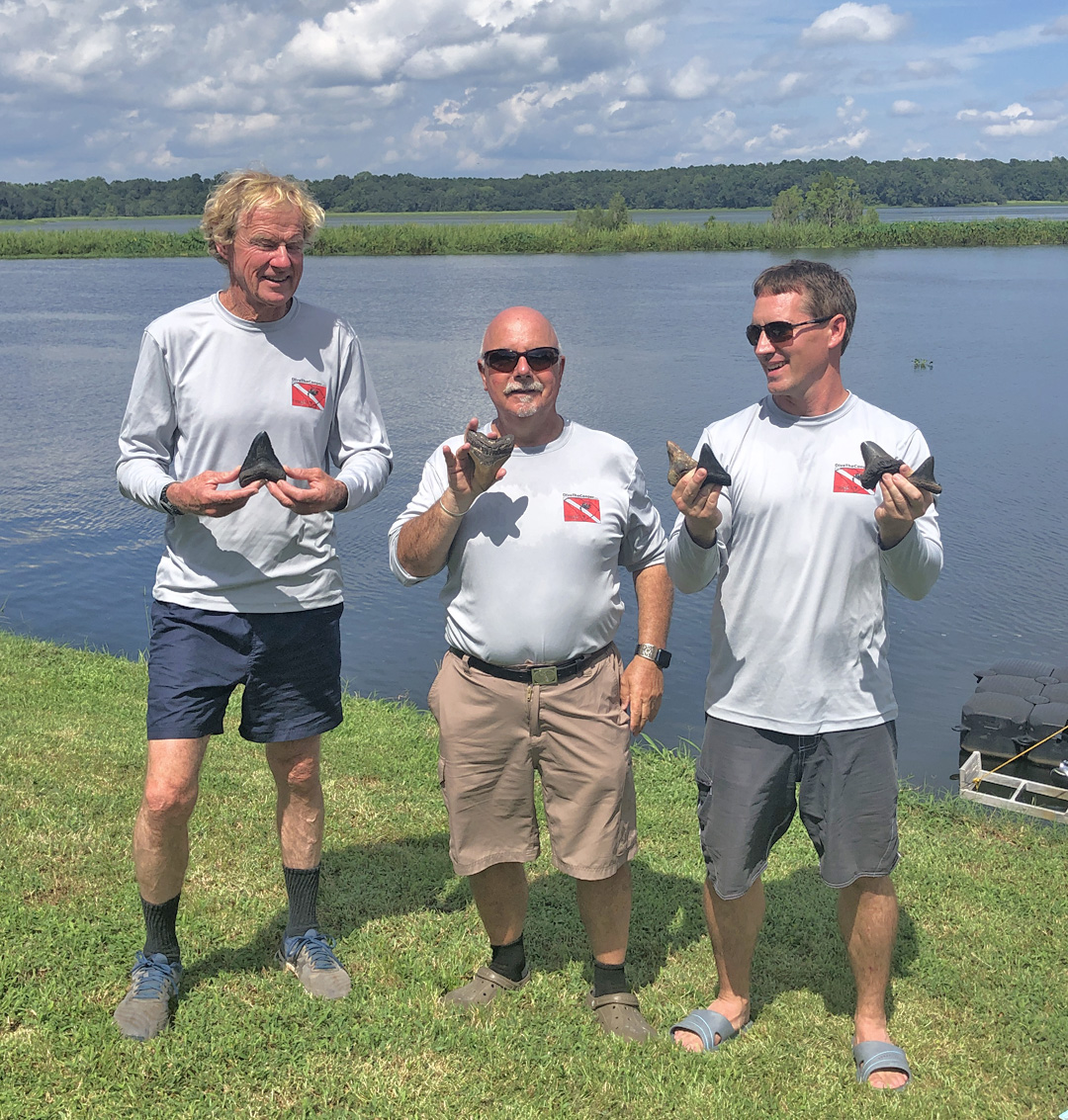
The Diligent Divers: Lee - Ted - Jason (FossilGuy)
Please note how they are both staring at my Meg tooth!

See Jason's report at his most excellent and educational website!

To schedule a dive trip contact Mark at his website.
[Other Sites ] [ Fossil Page ] [ Home ]